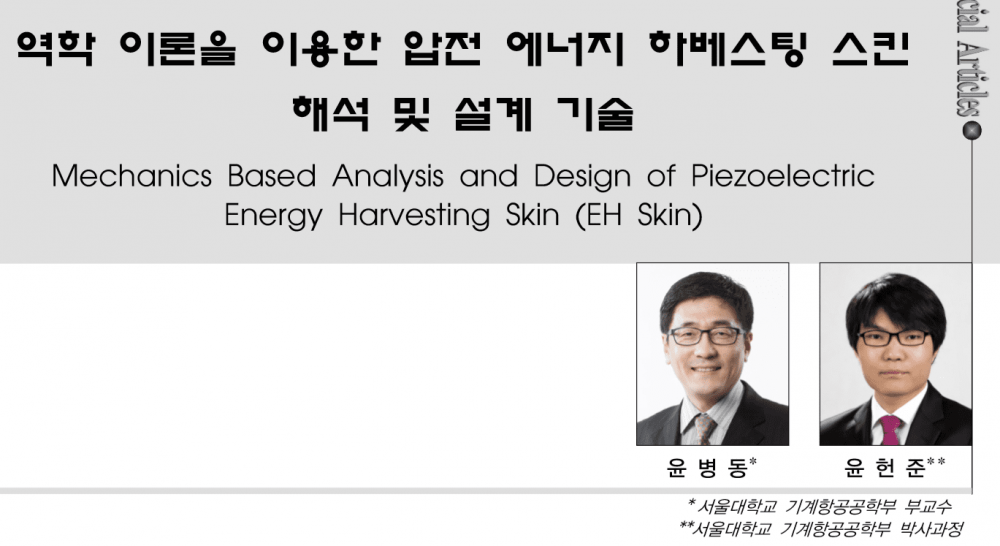전산구조공학 기획특집기사 - 역학 이론을 이용한 압전 에너지 하베스팅 스킨 해석 및 설계 기술
페이지 정보
작성자 최고관리자 작성일 14-03-01 12:14 조회 980회본문
전산구조공학 기획특집기사 - 역학 이론을 이용한 압전 에너지 하베스팅 스킨 해석 및 설계 기술

The advances in wireless communications and low-power technology promote the use of wireless sensors.
However, the limited life expectancy and high replacement cost of batteries make it difficult to use wireless sensors, although they have lots of benefits more than wired sensors.
Energy harvesting (EH) technology, which scavenges electric power from ambient, otherwise wasted, energy sources, has been explored to develop self-powered wireless sensors and possibly eliminate battery replacement cost for wireless sensors. Among ambient energy sources, vibration energy, widely available, can be converted into electric power using a piezoelectric energy harvester that can generate alternating current in response to applied mechanical strain(S. R. Anton, 2007).
Even though piezoelectric energy harvesters have primarily designed as a cantilever beam, they have some practical drawbacks from a practical point of view: (a) an additional space required for a proof mass and clamping device, (b) a great deal of vibration energy loss when clamping conditions become loosened after long time use, (c) a fatigue failure expected due to excessive strains at a clamping part.
As a compact and durable design concept, piezoelectric energy harvesting skin (EH skin) has been proposed to scavenge electric power from vibration energy of an engineered system with an additional thin piezoelectric layer as one embodiment (S. Lee, 2011), as shown in Figure 1. It is of great importance to exploit rigorous theories and mechanics for developing piezoelectric EH skin.
Therefore, this article presents important aspects of piezoelectric EH skin. The following sections will explain core technologies such as analysis, design, and demonstration of piezoelectric EH skin for successfully utilizing self-powered wireless sensors.
- 이전글기계저널 테마기획 - 통계적 모델 검증 및 보정 기술 14.02.01
- 다음글서울대 윤병동 교수팀, 2014 PHM 데이터 챌린지 2위 수상 14.04.07
